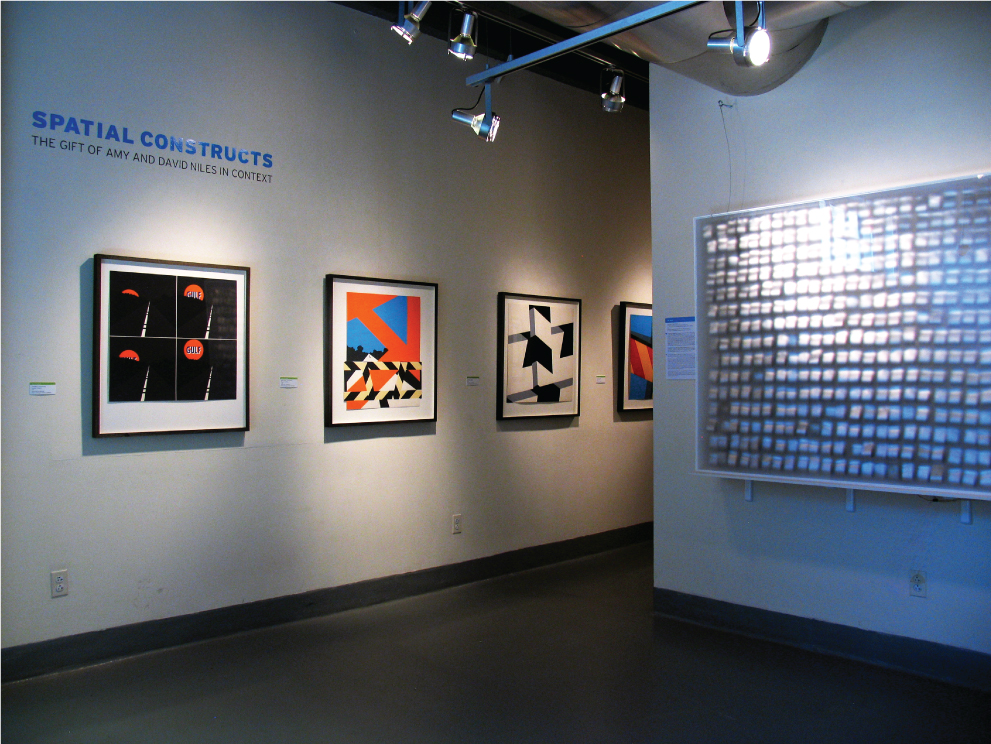
MinerAlert

MinerAlert


In 2004 Amy Niles Gladstein and her brother David Niles gave nine works of art to the University of Texas at El Paso (UTEP). The gift was facilitated by Mimi Gladstein, Professor of English and Theatre Art, and mother of Amy's husband Cliff Gladstein. The art was from the private collection of Dr. Gerald T. Niles, father of Amy and David. Dr. Niles, a psychiatrist, collected both art and rare books. He knew the artists, Leo Rabkin (b. 1919) and Allan D'Arcangelo (1930- 1998) personally. Rabkin and D'Arcangelo, though little known outside of New York City at the time, serve as significant links to the evolution of contemporary art in the United States. This exhibition represented the first time that the Niles' gift to UTEP had been on public view.
How space is seen, constructed, manipulated and understood drives the work of Rabkin's sculpture and D'Arcangelo's serigraphs that were on view in Spatial Constructs. Whether through two or three-dimensional means, the interactive experience of viewing their works involved the viewer both physically and visually.
Alongside works by Rabkin and D'Arcangelo, one drawing by Joseph Kosuth (b. 1945) and two prints by Ellsworth Kelly (b. 1923), which are already part of the Rubin Center's permanent collection, were displayed. Kelly and Kosuth, who represent major forces in Minimialism and Conceptual art, were brought into conversation with the Niles' gift to stylistically situate Rabkin and D'Arcangelo's work and establish visual and historical overviews of the legacy of the art world in the 1960s. All four artists exhibited in Spatial Constructs were involved in the burgeoning Pop, Conceptual and Minimalist art movements in New York City in the 1960s.
Allan D'Arcangelo, who is best known for his depictions of traffic signs and American highway imagery, was said by the New York Times in 1998 to have “earned a place in the first generation of Pop artists” with his first solo exhibition in New York in 1963. Working over a span of five decades, D'Arcangelo's search for post-abstraction as manifested in his views of the highway allows the viewer to consider the tension between flat shapes and perspectival space. It is this concern with abstract, two-dimensionality that connects his works to that of Rabkin. Rabkin's art in the 1950s and ʻ60s addresses both sculpture and painting in the forms of watercolors and box constructions. The Rabkin piece in this exhibition is one of his box constructions and was recently restored to its original condition by contemporary Conservation, Ltd. in New York City. Whether through sculptural work or the graphic simplicity of a print, D'Arcangelo and Rabkin present the viewer with a variety of points of engagement.
Spatial Constructs: The Gift of Amy and David Niles in Context is curated by Stacy Schultz, assistant professor of art history at the University of Texas at El Paso and Karina Tovar, senior studio art major.